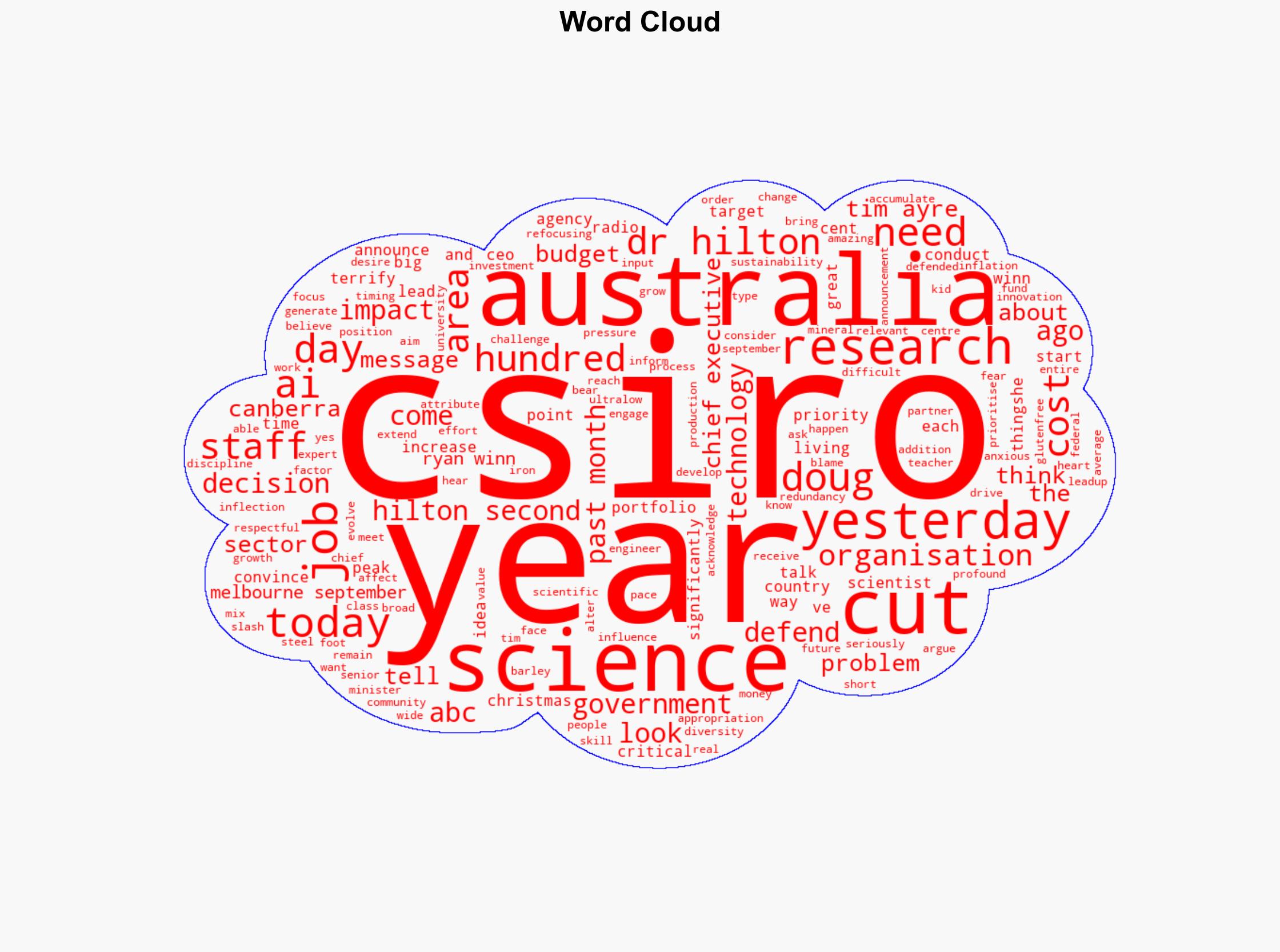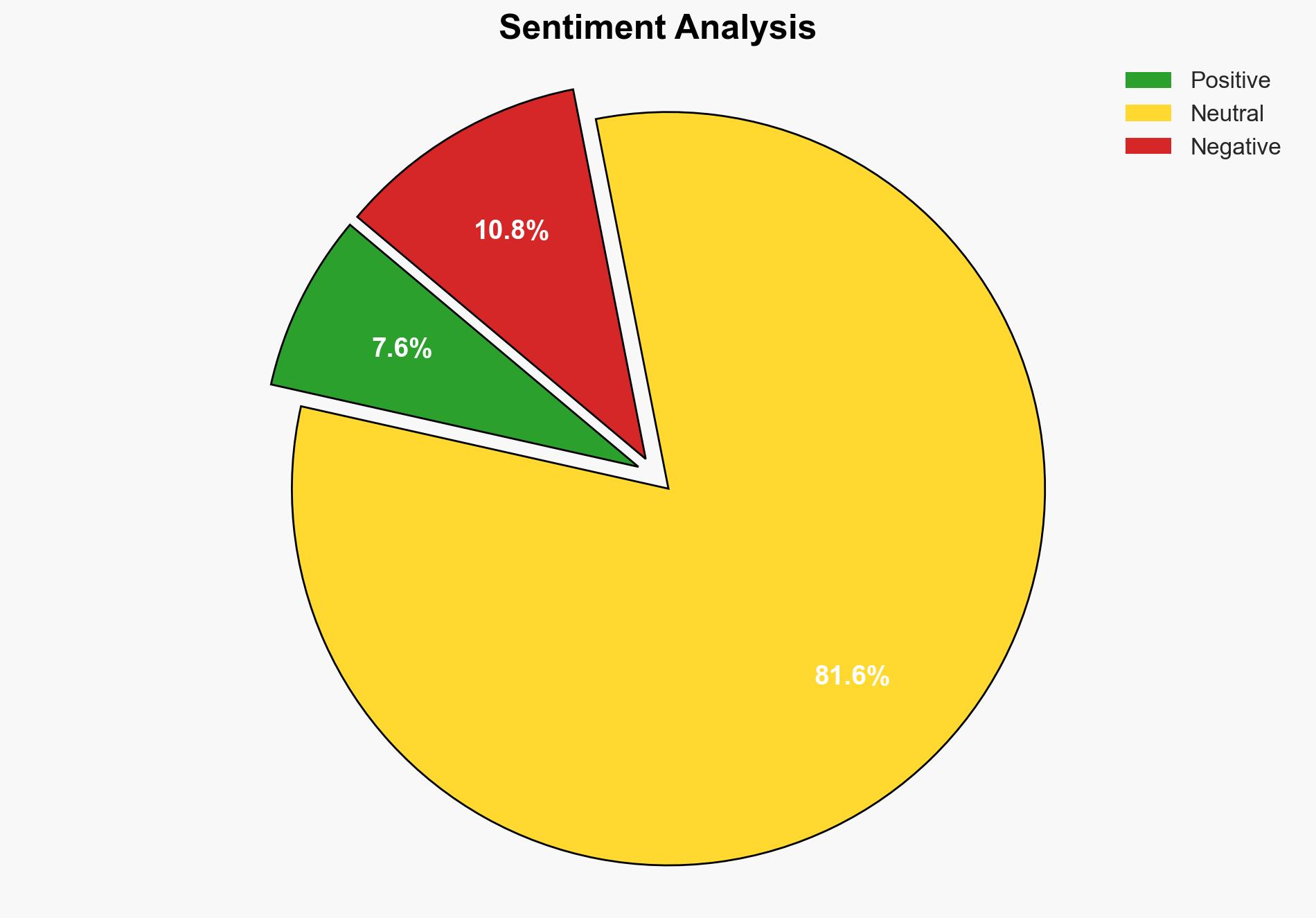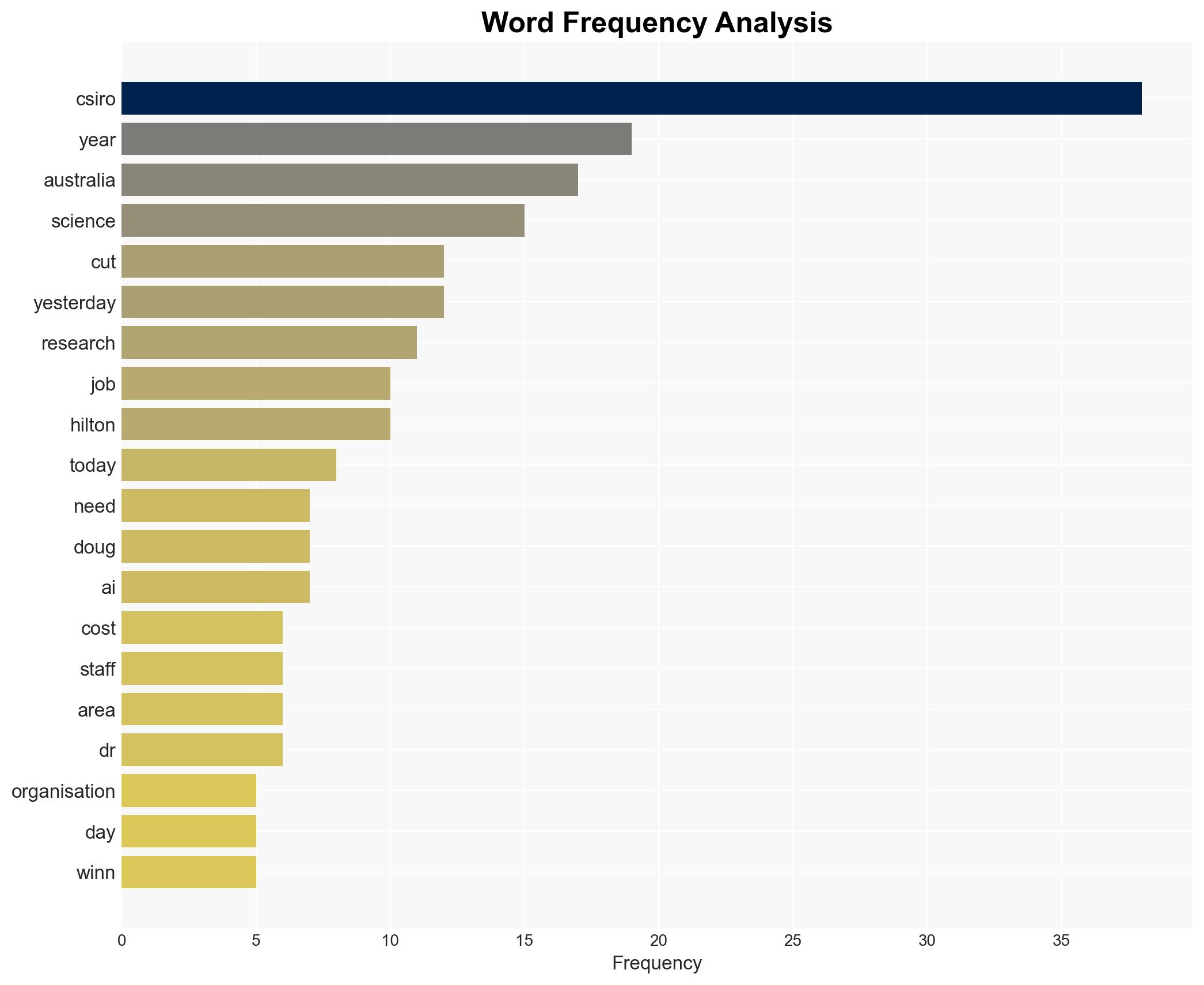‘The cost of science has gone up’ CSIRO chief defends job cuts – ABC News (AU)
Published on: 2025-11-19
AI-powered OSINT brief from verified open sources. Automated NLP signal extraction with human verification. See our Methodology and Why WorldWideWatchers.
Intelligence Report:
1. BLUF (Bottom Line Up Front)
The strategic judgment is that the job cuts at CSIRO are primarily driven by increased operational costs and a strategic refocusing on priority research areas. This aligns with Hypothesis 1, which is more supported by the evidence. Confidence level: Moderate. Recommended action: Engage with stakeholders to ensure transparency and explore alternative funding mechanisms to mitigate the impact on scientific research and innovation.
2. Competing Hypotheses
Hypothesis 1: The job cuts are a necessary response to increased costs of conducting research and a strategic realignment to focus on areas with the highest impact potential for Australia.
Hypothesis 2: The job cuts are primarily a result of inadequate government funding and broader economic pressures, rather than a strategic realignment.
Hypothesis 1 is more likely because the CSIRO chief executive, Doug Hilton, explicitly mentions the need to alter priorities and focus on impactful research areas. Additionally, the mention of inflation and cost of living pressures supports the notion of financial constraints necessitating strategic adjustments.
3. Key Assumptions and Red Flags
Assumptions: It is assumed that the increased costs are accurately reported and that the strategic realignment is genuinely aimed at maximizing impact. It is also assumed that the government funding levels are static or declining.
Red Flags: The timing of the job cuts before Christmas could indicate potential morale issues or backlash. The lack of detailed financial data supporting the cost increase claims is a gap.
4. Implications and Strategic Risks
The job cuts could lead to a talent drain, reducing Australia’s capacity for scientific innovation. Politically, this may lead to criticism of the government’s support for science. Economically, reduced research output could impact sectors reliant on CSIRO’s innovations. Informationally, there may be a negative perception of Australia’s commitment to science and technology.
5. Recommendations and Outlook
- Engage with government and private sectors to explore alternative funding sources.
- Enhance communication strategies to manage stakeholder expectations and maintain morale.
- Best-case scenario: Successful realignment leads to impactful research outcomes, securing future funding.
- Worst-case scenario: Talent loss and reduced innovation capacity harm Australia’s scientific standing.
- Most-likely scenario: Short-term disruptions with gradual stabilization as new priorities take effect.
6. Key Individuals and Entities
Doug Hilton (CSIRO Chief Executive), Tim Ayres (Federal Science Minister), Ryan Winn (Science & Technology Australia Chief Executive).
7. Thematic Tags
Cybersecurity, Economic Pressures, Strategic Realignment, Scientific Innovation, Government Funding, Stakeholder Engagement
Structured Analytic Techniques Applied
- Adversarial Threat Simulation: Model and simulate actions of cyber adversaries to anticipate vulnerabilities and improve resilience.
- Indicators Development: Detect and monitor behavioral or technical anomalies across systems for early threat detection.
- Bayesian Scenario Modeling: Quantify uncertainty and predict cyberattack pathways using probabilistic inference.
- Narrative Pattern Analysis: Deconstruct and track propaganda or influence narratives.
Explore more:
Cybersecurity Briefs ·
Daily Summary ·
Support us





